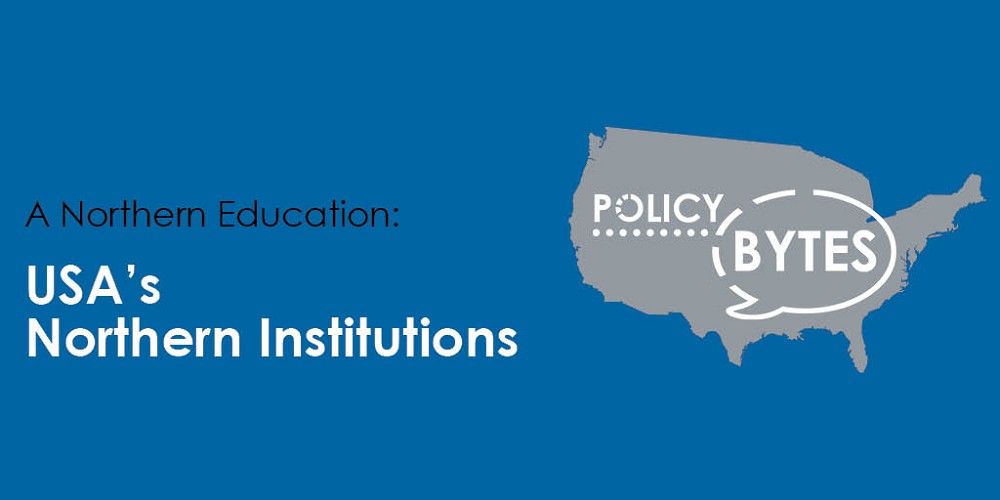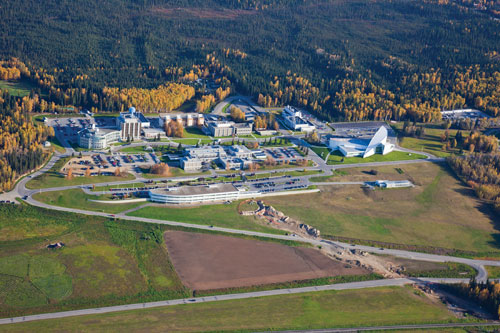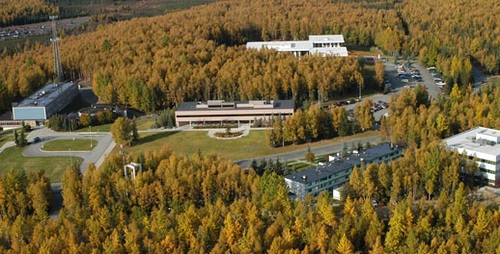A Northern Education – USA's Northern Institutions
December 18, 2017 - Northern Ontario is currently home to ten post-secondary institutions – 4 universities and 6 colleges – that provide a range of innovative programs to students across the North, and from other communities in Canada and abroad. But beyond Northern Ontario, much has been done to develop institutions that service communities in northern and remote settings. This blog is a part of a series entitled A Northern Education, the content of which has been adapted from a recently released NPI paper, “A University for Timmins? Possibilities and Realities”. Each week we profile institutions in Canada’s northern regions, or in other northern communities around that globe, that might provide some lessons for Northern Ontario when it comes to delivering postsecondary education in northern regions.
This week we focus on USA’s Northern Institutions: University of Alaska-Fairbanks and Alaska Pacific University.

University of Alaska-Fairbanks:
The United States has a long-standing tradition of establishing land-grant public universities in newly settled areas. The University of Alaska was formally established in 1917 in the small and isolated mining town of Fairbanks, located in the centre of the then Alaska Territory, and opened for classes in 1922. The federal government provided the initial resources for the new intuition, primarily in the form of a grant of land, which was to be sold to pay for the establishment of the university. The institution started operations as the Alaska Agricultural College and School of Mines, changing its name to the University of Alaska eighteen years later. The university continued to expand, focusing largely on natural resources, geophysical sciences, and professional training targeted at the Alaska work environment. The university maintained an active research program, benefiting from substantial funding from the US government and strong territorial support, and made major and sustained contributions to the territory’s development. The federal government’s interest continued even after Alaska was granted statehood in 1959, in significant measure because of Alaska’s prominent role as a northern outpost during the Cold War and as a staging area during the Vietnam War.
The University of Alaska Fairbanks became the flagship of the University of Alaska statewide system in 1975, and maintains a reputation as one of the circumpolar world’s elite institutions. Its graduate programs are among the largest North-focused offerings, with prominent roles in space science, regional development, Indigenous studies, northern education, and resource development. The University of Alaska Fairbanks has just under 10,000 students, and is the most prominent unit in the 35,000 student University of Alaska system, which incorporates university sites and colleges. The university is widely credited with supporting the state’s postwar economic prosperity and with providing a large cohort of northern training specialists to support regional business and government operations.
 Source: https://www.avma.org/News/JAVMANews/Pages/120101q.aspx
Source: https://www.avma.org/News/JAVMANews/Pages/120101q.aspx
Alaska Pacific University:
University systems across the North are almost exclusively publicly funded, primarily because the circumpolar countries favour such institutions and, in the case of Alaska, because of the small population. Alaska Pacific University (initially Alaska Methodist University) was established in Anchorage, the largest city in the state, in 1959. The university, which has fewer than 750 students, shifted to a more secular approach to post-secondary education in the 1970s, largely in an attempt to broaden its recruiting base. The university operates in the classic model of the US liberal arts college, offering an alternative educational pathway, albeit with tuition fees of more than $20,000 per year. Small, private institutions are commonplace across the United States, but they have not taken firm root in Alaska. Sheldon Jackson College, founded in 1878 and located in the isolated community of Sitka, closed in 2007 due to low enrolment and the attending financial challenges.
Read last week's installment of this series here.
Dr. Ken Coates is Canada Research Chair in Regional Innovation at the Johnson-Shoyama Graduate School of Public Policy, University of Saskatchewan campus.
The content of Northern Policy Institute’s blog is for general information and use. The views expressed in this blog are those of the author and do not necessarily reflect the opinions of Northern Policy Institute, its Board of Directors or its supporters. The authors take full responsibility for the accuracy and completeness of their respective blog posts. Northern Policy Institute will not be liable for any errors or omissions in this information, nor will Northern Policy Institute be liable for any detriment caused from the display or use of this information. Any links to other websites do not imply endorsement, nor is Northern Policy Institute responsible for the content of the linked websites.
Northern Policy Institute welcomes your feedback and comments. Please keep comments to under 500 words. Any submission that uses profane, derogatory, hateful, or threatening language will not be posted. Please keep your comments on topic and relevant to the subject matter presented in the blog. If you are presenting a rebuttal or counter-argument, please provide your evidence and sources. Northern Policy Institute reserves the right to deny any comments or feedback submitted to www.northernpolicy.ca that do not adhere to these guidelines.

 Source:
Source: